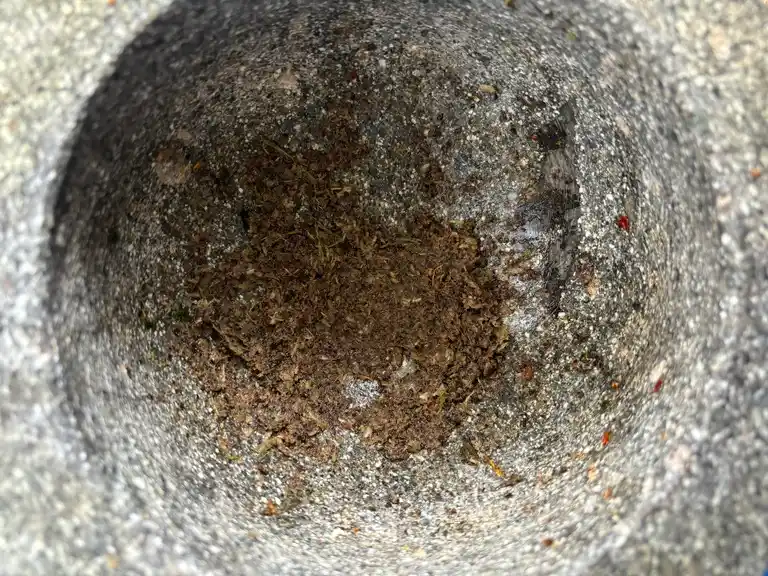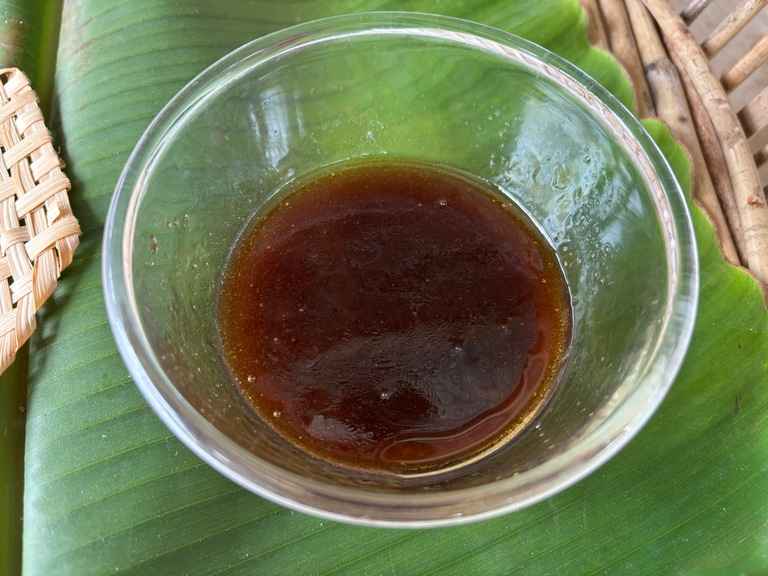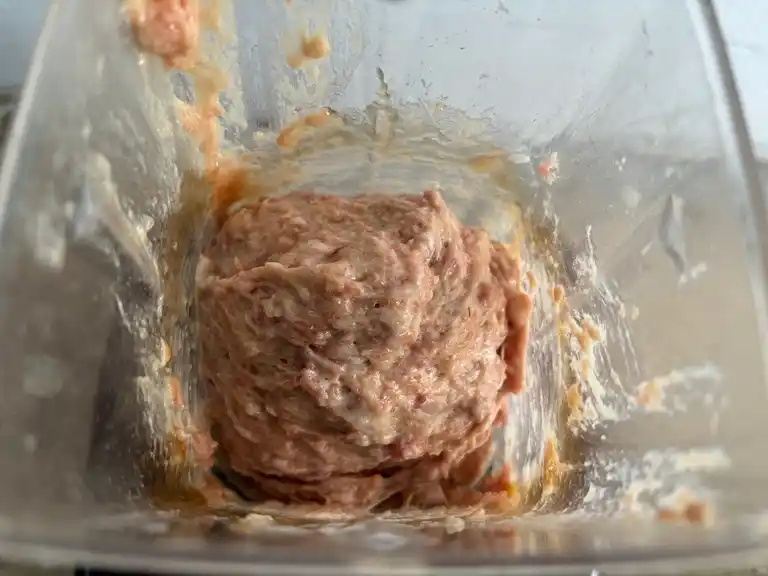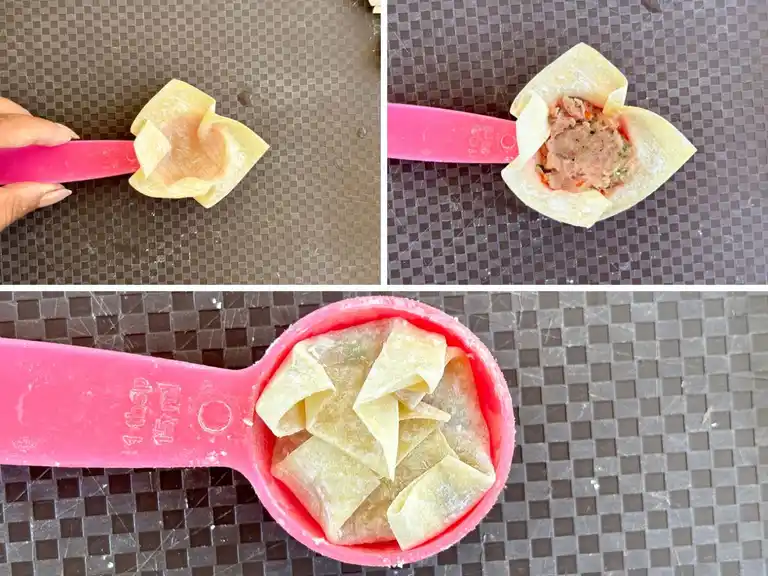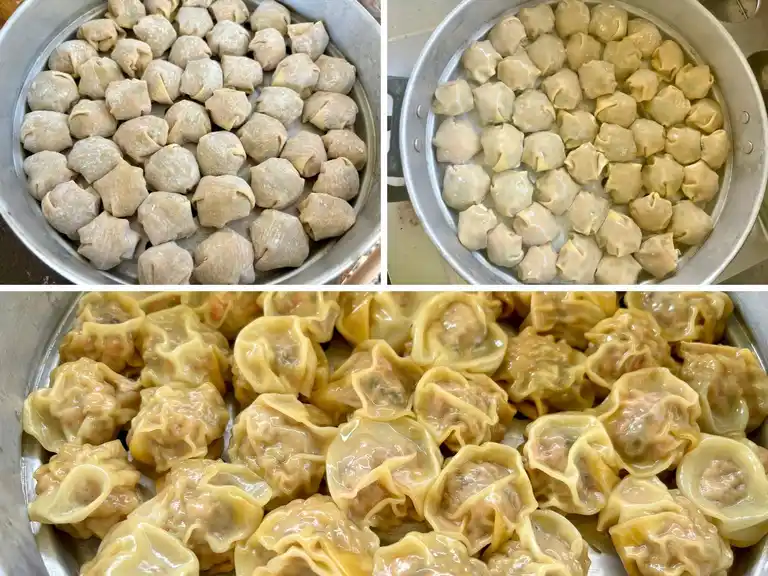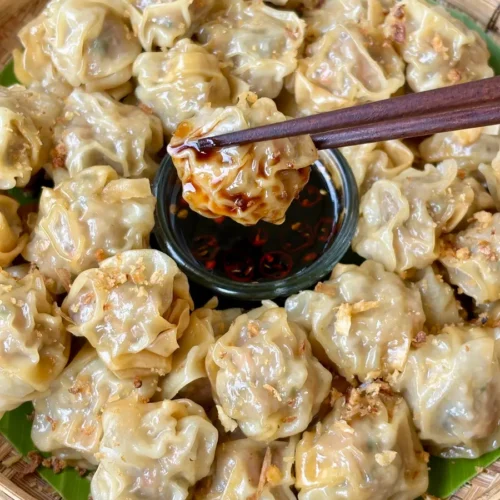Appetizers | Pork | Steaming | Stovetop
ByPraew
This post may contain links to affiliate websites, such as Amazon, and I receive an affiliate commission for any purchases made by you using these links. I appreciate your support!
Jump to Recipe Print Recipe
Kanom jeeb, the beloved Thai version of Chinese pork siu mai, is a staple at Thai restaurants and dim sum carts. It’s a tender, pork-filled snack that’s the perfect start to any Thai meal. This Thai dumplings recipe is simple, flavorful, and authentic!
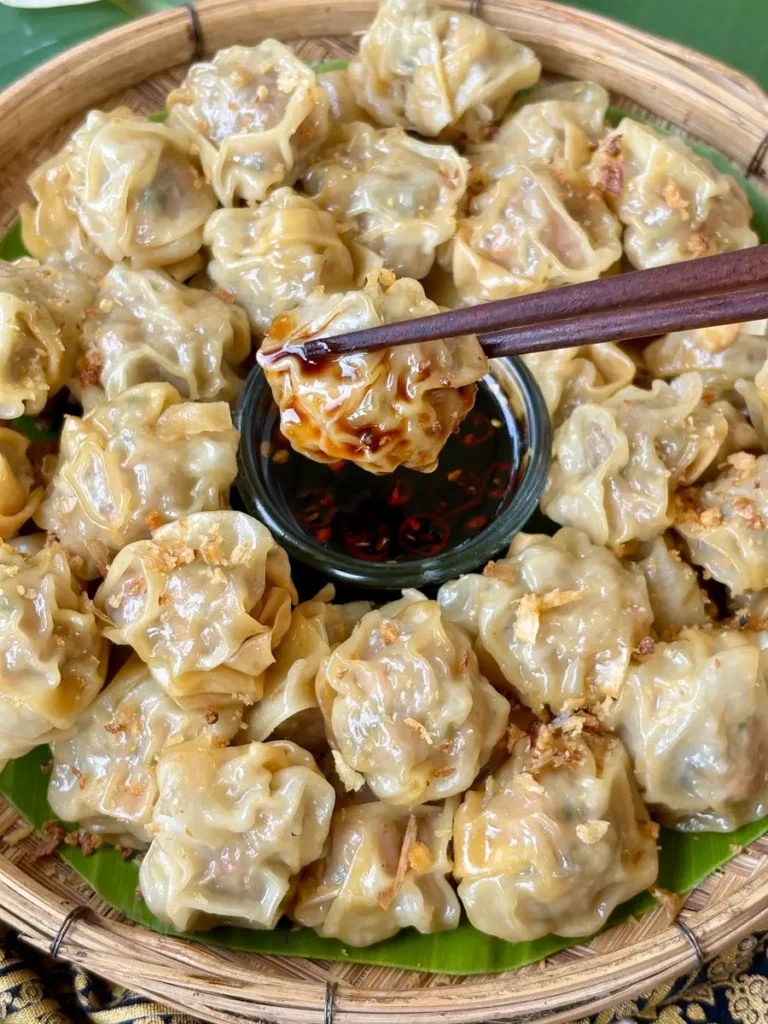
Pair these pork dumplings with my irresistibly delicious wonton dipping sauce – also try my Thai pork and shrimp wonton recipe and Thai fried wonton!
Kanom jeeb is a steamed snack inspired by a staple in Chinese cuisine: pork siu mai dim sum. These Thai dumplings are often filled with minced pork and/or shrimp. Steamed in a traditional bamboo steamer, they’re typically served with a savory dipping sauce.What is kanom jeeb
Kanom jeeb is a Thai term that means “pleated dumpling” or “pleated snack”. “Kanom” is the word for Thai snacks and sweet, while “jeeb” refers to the pleated look of these dumplings.
Kanom jeeb, also known as khanom jeeb or kanom jeep, is pronounced as “kah-nom jeep”.
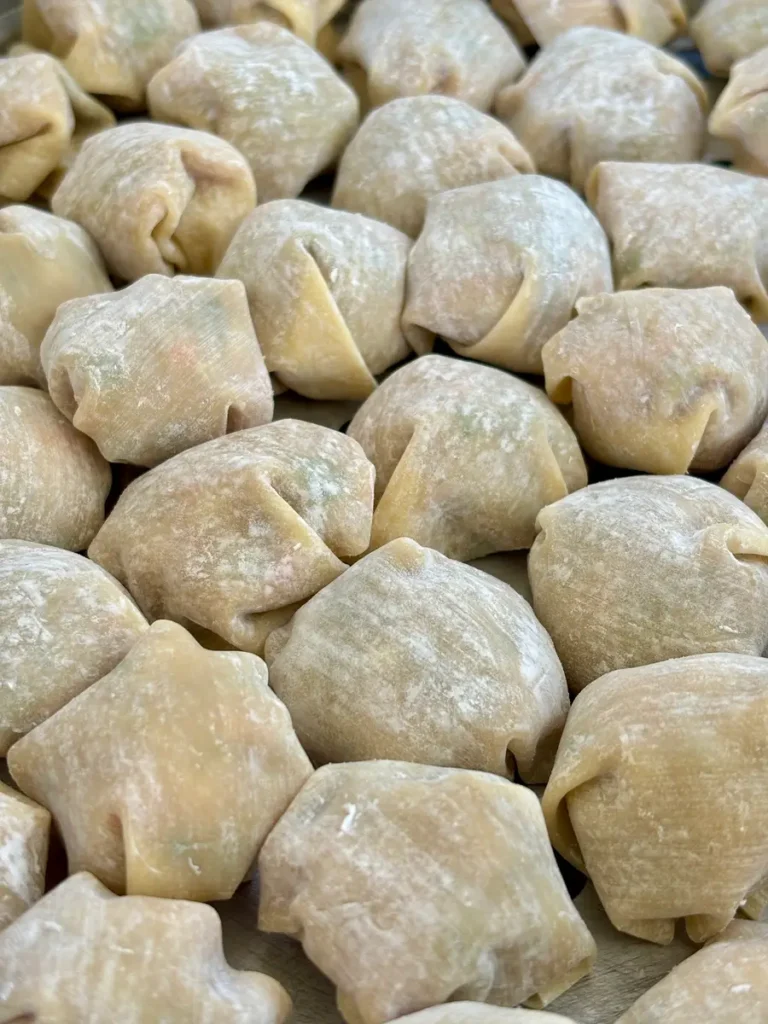
Thai dumplings recipe
These Thai pork dumplings are wrapped in thin, silky dough, and filled with fresh vegetables, aromatic seasonings, and ground pork.
Steam them, boil them, or give them a crispy edge by deep-frying. Each method is a winner, these are seriously addictive!
Choose minced pork, shrimp, or both – this easy dumpling recipe is so versatile.
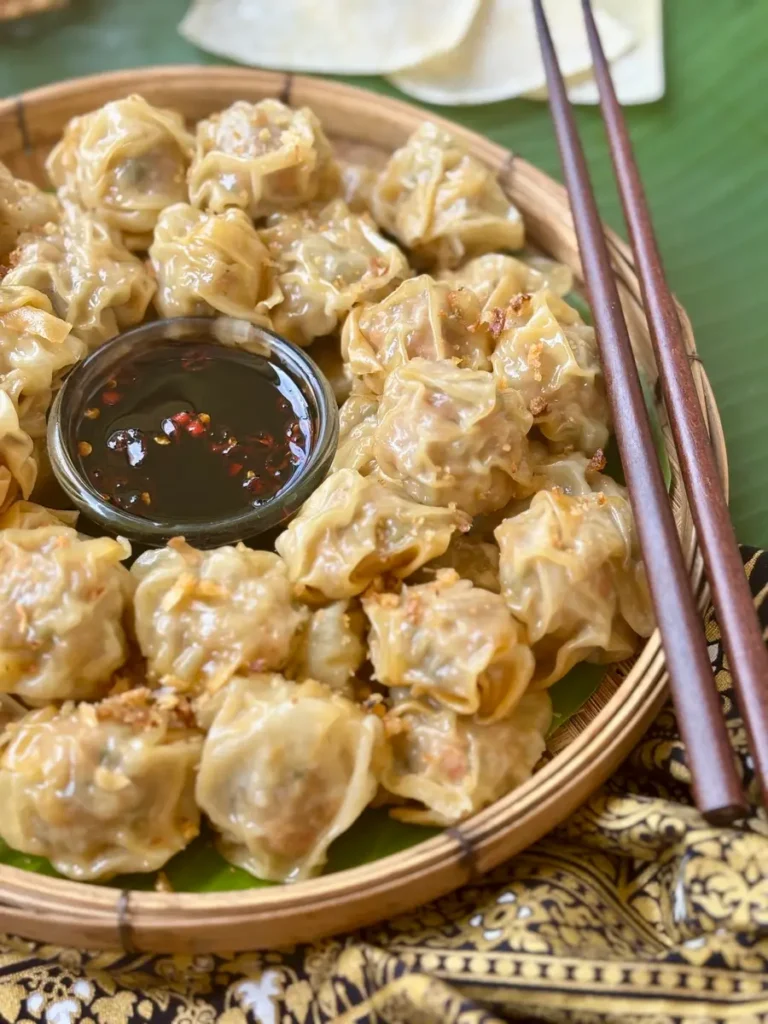
They’re the perfect appetizer for Thai meals. Whether you’re having pad Thai or a spicy green curry, these are the dumplings you’ll want to have on repeat.
Don’t forget a dipping sauce, an absolute must! Enjoy them with my Thai sweet chili sauce, my special wonton dipping sauce, or even a quick store-bought alternative.
Dumplings in Thailand
In my small rural town, there’s a local legend driving around a dim sum cart. He crafts THE BEST Thai dumplings you can imagine, all from scratch.
His wrappers are homemade, his filling is irresistible, and that dipping sauce is to dream about.
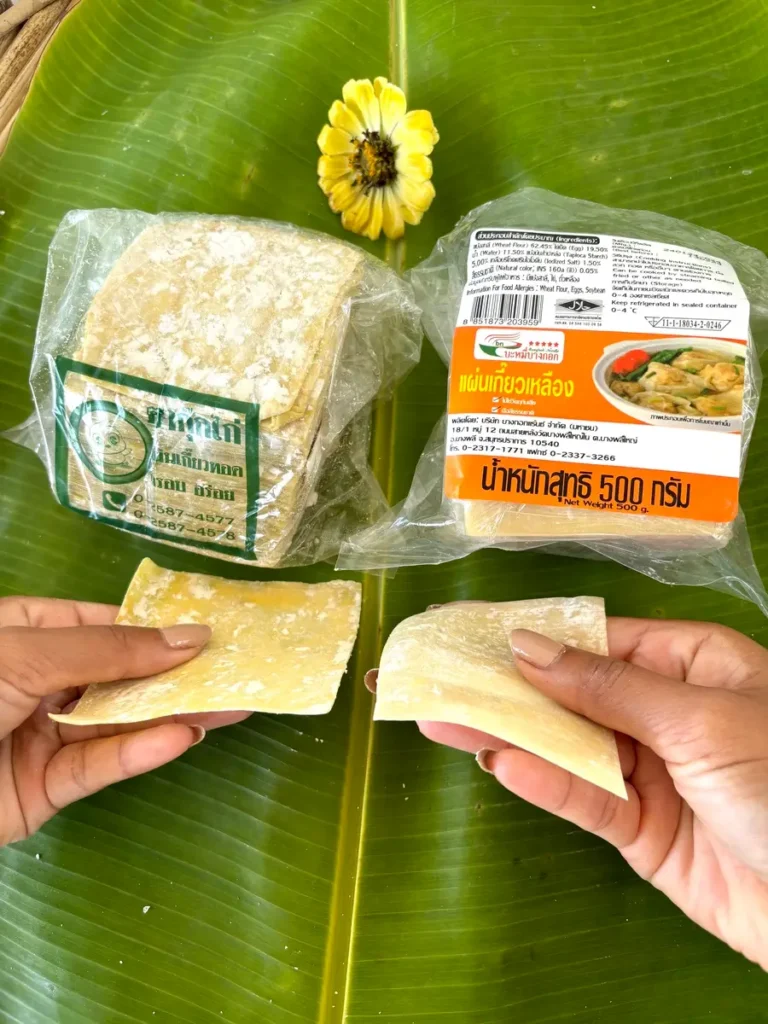
He shared his secret: it’s all pork in his steamed dumplings, keeping it delicious and affordable.
Inspired, I set out to whip up the best Thai dumplings recipe, focusing on just minced pork.
Of course, feel free to toss add some shrimp if you’re a fan of seafood!
Dumpling filling ideas
- Vegetables and herbs: Carrots, onions, and dried shiitake mushrooms are classic options. Shredded cabbage, bean sprouts, spinach, chives, and green onions can be used for dumplings.
- Proteins: Besides minced shrimp and pork, try minced chicken or beef, or go vegetarian with a vegetable-only mix.
Ingredients
Ingredients can be sourced at Asian grocery stores and Asian markets.
The exact measurements are in the recipe card at the end of this post.
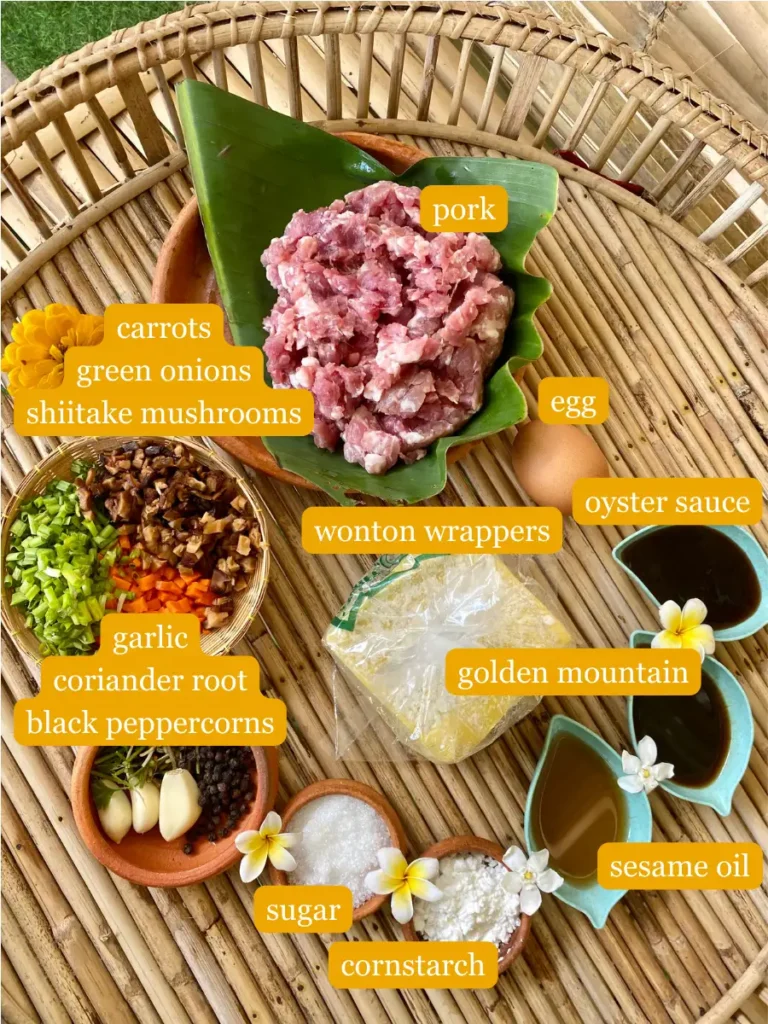
- Pork – Pork is a classic choice in the filling of khanom jeeb, it adds a meaty flavor and minced pork has a great texture and juicy bite. The meat is infused with spices and seasonings, and during the cooking process it gives flavor to the dough as well. Besides pork, you can use chicken, shrimp, beef, or a combination of those as well.
- Wonton wrappers – Wonton wrappers are very thin sheets of dough that are used to make Thai-style wontons. They’re easy to fold in the palm of your hand, and the most common shapes are square and round. In Thailand, they’re sold fresh at food markets, but outside Asia you can find them frozen in Asian grocery stores.
- Coriander root, black peppercorns – Coriander root and black peppercorns bring a peppery flavor and refreshing taste to the dumplings. If you’re not so fond of them, you can simply omit them. You’re free to adjust the ingredients to suit your taste and create personalized khanom jeeb that the whole family can enjoy.
- Garlic, carrots, green onions, dried shiitake mushrooms – These vegetables create flavor and texture. They’re my favorite choice of vegetables for this Thai dumplings recipe.
- Golden mountain sauce, oyster sauce, white sugar – My choice of seasonings for adding an umami and sweet and savory flavor. These are popular ingredients of Thai cuisine and a common choice to enhance the flavor of our dishes.
- Sesame oil – An oil from roasted sesame seeds, adds a rich flavor and pleasant aroma.
- Cornstarch – Cornstarch acts as a binding agent, and it helps to bind the ingredients together, so they don’t fall apart during the cooking process.
- Garlic oil – Before cooking the dumplings, applying a small layer of garlic oil greatly enhances the taste and makes them more visually appealing. Garlic oil is made by deep-frying chopped garlic, and the crispy fried garlic can be used as garnishing when serving.
How to make pork dumplings
Step 1: Pound coriander roots, black peppercorns, and garlic with a mortar and pestle.
Step 2: Combine golden mountain sauce, white sugar, sesame oil, and oyster sauce in a mixing bowl.
Step 3: Add ground pork into a blender or food processor with your sauce mixture, egg, and tapioca starch. Pulse until it reaches a smooth texture that will be easy to spoon into the dumpling wrappers.
Step 4: Transfer the ground dumpling filling mixture to a large mixing bowl and thoroughly combine with the crushed spice mixture of step 1 and your finely diced vegetables.
Step 5: To easily shape the dumplings, place a wonton wrapper over the concave side of a tablespoon, press gently to create a well, add the filling to the center, lightly moisten the edges of the wrapper with water, then fold the edges up and around the filling, pinching to seal while nestled in the spoon to maintain the perfect shape.
Step 6: Prepare your steamer by lining it with parchment paper to prevent sticking. Cover and steam over medium heat for 10 minutes until they’re cooked through, and the wrappers are translucent. Enjoy hot.
Kitchen tools
- Rolling pin if you’re making dumpling wrappers from scratch.
- Small spoon for portioning the filling into each wrapper.
- Large mixing bowl for combining the filling.
- Mortar and pestle for crushing spices.
- Small brush for applying garlic oil.
- Bamboo steamer or steaming pot.
Serving suggestions
Serve your kanom jeeb as a delightful appetizer or as a light snack. Pair with an array of dipping sauces and offer chopsticks or toothpicks. Sprinkle with crispy fried garlic for a finishing touch.
Dipping sauce options
This Thai food blog is a goldmine of traditional Thai sauces. Whether you like spicy, sweet, sour, or salty, you’ll find the perfect match for your Thai dumplings:
- Authentic Thai peanut sauce
- Thai tamarind dipping
- Vinegar dipping sauce
- Thai sweet chili sauce
- Thai green chili sauce
More Thai appetizers
These Thai appetizers complement the dumplings, for a complete Thai meal.
- Spicy fried chicken recipe without buttermilk
- Thai shrimp rolls with peanut sauce
- Tod mun pla recipe (Thai fish cakes)
- Thai chicken wings
- Moo ping (Thai grilled pork skewers)
How to store and reheat
For short-time storage, refrigerate the dumplings. Before storing, allow the dumplings to cool down completely. Tuck them away in an airtight container and keep them in the fridge for up to two days.
Freezing instructions: For longer storage, you can freeze dumplings by laying them out separately on a tray, stored in the freezer. Once the dumplings are frozen, you can transfer them to a freezer bag and store them for several weeks or months.
Reheating instructions: When you’re ready, reheat the dumplings by steaming them until they’re warm. If they’re frozen, no need to thaw, just extend the steaming time. Alternatively, you can choose to boil, pan-fry, or deep-fry them.
Frequently asked questions
Can I customize the filling?
Yes! Feel free to add extra seasoning, vegetables, or other protein. Make this recipe your own by experimenting with different flavors. Turn it into a vegan recipe by swapping oyster sauce for mushroom sauce.
How much fat is in khanom jeeb?
The fat content in khanom jeeb varies based on the filling and preparation method. Typically, each dumpling has about 1–3 grams of fat, mainly from the pork or shrimp filling and any added oils.
Can I make dumplings in advance?
Yes, you can store them in your refrigerator for up to 2 days after cooking them. Additionally, you can shape them and store in your refrigerator until you’re ready to cook. Another option is to freeze them for later use.
What sauces go well with Thai dumplings?
Thai dumplings pair wonderfully with a soy-based sauce or a Thai sweet chili sauce.
Are Thai dumplings gluten-free?
Thai dumplings are typically not gluten-free, because the wrappers are usually made from wheat flour. However, it is possible to make or find gluten-free versions by using wrappers made from gluten-free flours such as rice flour or tapioca starch.
Related Thai appetizer recipes you’ll love
- Thai chicken satay with peanut sauce
- Miang kham recipe (Thai leaf-wrapped bites)
- Khao taen recipe (Thai crispy rice cakes)
- Goong tod recipe (deep-fried prawns)
- Hot and spicy pork rinds recipe
- Thai corn fritters
Loved reading this kanom jeeb recipe? Please make my day by dropping a star rating and/or a comment below! Follow me onFacebook,Instagram, andPinterest.
Kanom Jeeb (Thai Dumplings Recipe)
Learn how to make kanom jeeb, Thai dumplings, and pair them with a dipping sauce of your choice.
Praew
Prep Time 30 minutes minutes
Cook Time 20 minutes minutes
Total Time 50 minutes minutes
Cuisine Thai
Course Appetizer, Snack
Serving Size 40 dumplings
Ingredients
- 14 ounces ground pork
- 1 egg
- 0.35 ounces coriander root
- 0.18 ounces black peppercorns
- 0.35 ounces garlic
- 1.05 ounce carrots finely diced
- 0.7 ounces green onions finely diced
- 0.35 ounces dried shiitake mushroom finely diced
- 3 tablespoons golden mountain sauce
- 1.5 tablespoon white sugar
- 2.5 tablespoons oyster sauce
- 1 tablespoon cornstarch
- 1 package of dumpling wrappers
- garlic oil to apply a small layer of oil to the wontons
- crispy fried garlic to taste, for garnishing
- 1.5 tablespoon sesame oil
Instructions
Pound coriander roots, black peppercorns, and garlic with a mortar and pestle.
Combine golden mountain sauce, white sugar, sesame oil, and oyster sauce in a mixing bowl.
Add ground pork into a blender or food processor with your sauce mixture, egg, and tapioca starch. Pulse until it reaches a smooth texture that will be easy to spoon into the dumpling wrappers.
Transfer the ground dumpling filling mixture to a large mixing bowl and thoroughly combine with the crushed spice mixture of step 1 and your finely diced vegetables.
To easily shape the dumplings, place a wonton wrapper over the concave side of a tablespoon, press gently to create a well, add the filling to the center, lightly moisten the edges of the wrapper with water, then fold the edges up and around the filling, pinching to seal while nestled in the spoon to maintain the perfect shape.
Prepare your steamer by lining it with parchment paper to prevent sticking. Cover and steam over medium heat for 10 minutes until they’re cooked through, and the wrappers are translucent. Enjoy hot.
Notes
- Use the nutrition card in this recipe as a guideline.
- Serve as an appetizer, as a snack, or as a light meal with a dipping sauce such as soy sauce,sweet chili sauce, or my homemadewonton dipping sauce.
- Experiment with different fillings such as pork, shrimp, chicken, beef, or vegetables-only.
